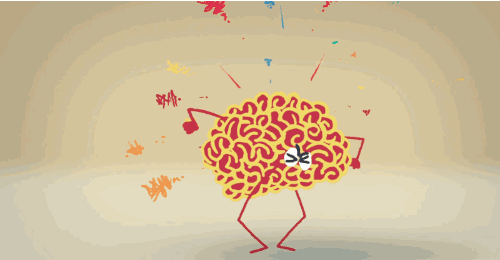Yelling As Communication: Common in Many Families


Written and verified by the psychologist Valeria Sabater
Yelling overexcites our brain, puts us on alert and attacks the subtle balance of our emotions. Unfortunately, yelling as communication is very common in many families. As a consequence, discomfort and invisible aggressions impact each of us leaving very deep consequences.
Jardiel Poncela always said great that the person who has nothing to say, says it loudly. However, curious as it may seem there is someone who does not understand another form of communication other than that where yelling is used to ask for you to pass the plate, to draw the attention of the child who is right next to them, or even to comment on the television program that you are watching as a family? There are people who can not communicate without anxiety, their own or the one they project.
“I can’t help it”, they justify. Avoiding raising their voice escapes the control of some because it is the timbre and is the tone that they have heard since earliest childhood, because it is yelling that has always helped them to be noticed, to mark territory in order to define authority and also, why not, to channel rage, frustration and contained egos that seek escape routes.
They will hear us better not by raising your voice, we know this, but often you need to yell because it is the only frequency in which we know to communicate, the only channel with which we see ourselves before others without knowing that if one shouts it is very likely that the other responds in the same way, and in that way shaping disorderly and coercive relational dynamics.
Something that, unfortunately, abounds in many families …

Yelling silently destroys our relationships
Yelling, beyond how it may seem, has a very specific purpose in the very nature of both human beings and other animals: to safeguard our survival and that of the group in the face of danger. Let’s look at a simple example. We are in the middle of the jungle, walking, enjoying nature. Suddenly, a scream is heard, it is a capuchin monkey that emits a high-pitched scream that sticks in our brain.
Now, that cry does not just serve as an “alarm” warning you and your group. Most animals in that environment, like us, react with fear, with excitement. It is a defense mechanism that controls a very specific structure of the brain: the amygdala. Just listen to a high-pitched sound, a loud tone of voice so that instantly this small area of the brain interprets it as a threat and activates our sympathetic nervous system to activate our need to escape.
Knowing that, understanding this biological and instinctive foundation, we can already deduce what it means, for example, to grow up in an environment where shouting abounds and where communication always occurs with a loud tone of voice. The brain lives in a state of constant alarm. Adrenaline is always there, the feeling that we have to defend ourselves from “something” plunges us into a state of chronic stress, of permanent, unsettling anguish.

On the other hand, what further intensifies this reality, is that when faced with an aggressive communication style it is common to generate defensive responses with the same emotional charge, with the same offensive component. In this way, we fall consciously or unconsciously into a vicious circle and into such a destructive dynamic where we all accumulate consequences in this complex jungle of human relationships where the quality of communication is everything.
Families that communicate in yells
Laura is 18 years old and has just realized something she had not known about before. She speaks with a very loud tone of voice. Her classmates often tell her that her voice is the loudest in class and that when she is in a group her way of communicating is somewhat threatening.
Laura wants to control this behavior. She knows that it will not be easy, because at home, her parents and siblings always communicate in this way: shouting. It is not necessary that there are any arguments, it is simply that this is the tone of voice with which she has always grown up and to which she has become accustomed. She also knows that in her house, the one who shouts is the one who makes themselves heard, and that raising her voice is necessary because television is always on, because everyone is in their own world and because … there is not enough harmony.
In this case, Laura must understand that you cannot change a family dynamic from one day to the next. She cannot change others, neither her parents nor her siblings, but she can change herself. What she can and should do is to cognitively control her own verbal style to understand that the one who screams attacks, that one does not need to raise one’s voice to be heard, and that often, a calm and serene tone of voice serves to connect much better with others. .

With this simple example we want to make something very simple clear: sometimes, we cannot change those who raised us, we cannot edit our past or erase those family dynamics where yelling was always present even if it was only to ask the time or how an exam went.
We cannot change the past but we can prevent that style of communication from characterizing us in our present, in our friendships or romantic relationships, in our own homes. Let us remember that it’s not more correct if you yell it, sometimes, it is more intelligent to know how to be quiet and listen, even more wisely, the one who knows how and in what way to communicate.
This text is provided for informational purposes only and does not replace consultation with a professional. If in doubt, consult your specialist.








